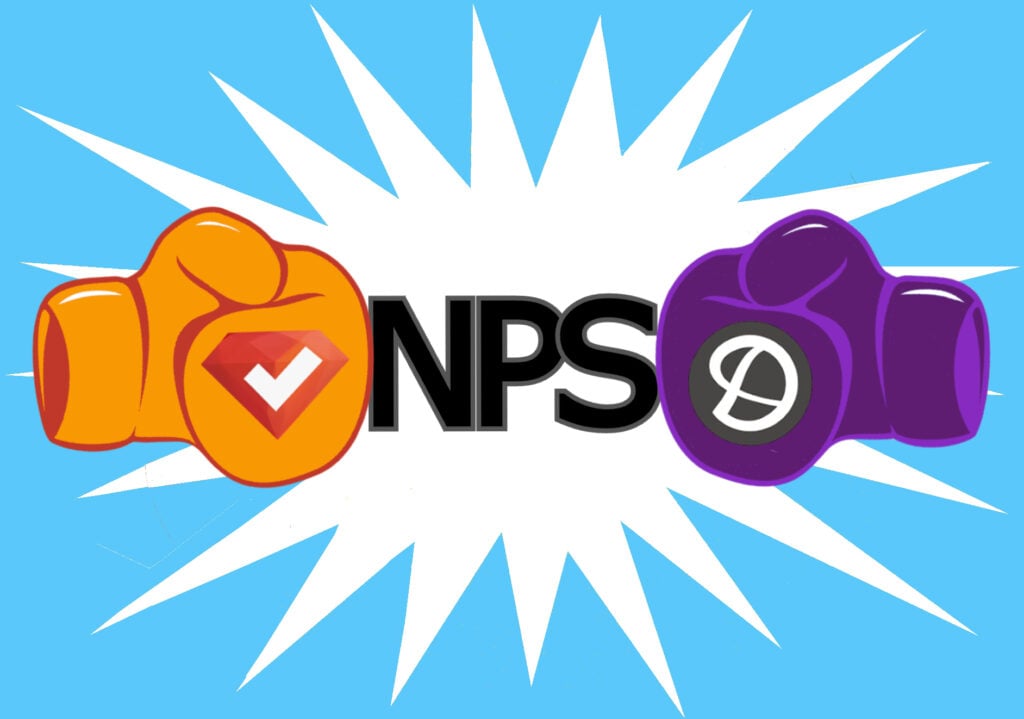Surveys are a great way for companies to learn more about their customers. Because it can be such an effective way of gathering information, more surveys are being conducted then ever before. While the intention is good – marketers want to understand how they are doing in order to make improvements – sending too many can result in survey fatigue. Thankfully, there are some surefire ways to reduce survey fatigue which we cover in this blog.
Create Your FREE Survey, Poll, or Questionnaire now!
What is Survey Fatigue?
Survey fatigue, or survey burnout, occurs when people become bored or fed up with surveys. This can happen if they are receiving an overwhelming number of requests for feedback, or during the actual survey, when they become tired of answering questions and drop out. Either way, survey fatigue is resulting in lower response rates and making it difficult for organizations to get enough feedback in order to form valid conclusions.
Ron Miller of Tech Crunch is sick of surveys. He recently went off on the topic of over-surveying in a piece titled I’m So Over Customer Experience Surveys. Miller writes, “I’m sick and tired of being surveyed after every interaction with anyone these days, whether it’s my dentist, an airline or Home Depot… There is a constant onslaught of this stuff, and people are definitely feeling the survey fatigue. It seems that by constantly asking about our experience, they are creating a bad one.”
So how can organizations continue to survey and make the experience a good one? We have some solutions!
10 Ways to Combat Survey Fatigue
When survey fatigue sets in, surveys are ignored, response rates plummet, and people may even provide inaccurate answers out of annoyance in order to skew data. To avoid this, here are ten ways to combat survey fatigue.
1. Make Shorter Surveys
Most people are busy, and simply aren’t going to take the time to complete a long survey (this has even given rise to the “micro survey”). So, when possible, keep it short. Only ask the most pertinent questions, and if possible use page breaks or group questions together.
A matrix-style survey is a great way to make long surveys appear shorter. You can try out SurveyLegend’s unique matrix survey in the live example below. Notice that the questions change, but the response options do not, making this easy for people to complete.
2. Use Survey Logic
Survey logic flows allow you to create “smart surveys” that intelligently react to respondents’ answers. With logic flows, each answer a participant gives can trigger a different consequence; for example, if they answer “No” to a question, they’ll be taken to a different set of questions than someone who answered “Yes.”
With SurveyLegend, you can even make an advanced logic flow that has several rules and performs multiple actions. Check out the live survey below. You can take it more than once to see how the question flow changes based on the Yes or No response you give.
3. Check Your Survey Questions and Flow
It is important to write each question clearly and avoid using jargon that could confuse respondents. You also want to avoid leading and loaded questions which can result in survey bias and inaccurate results. Be sure to get our guide on How to Write Survey Questions Like an Expert.
You also want to be sure your questions follow a logical pattern. Sequences of questions that jump from topic to topic at random are also likely to frustrate survey takers and cause them to drop out. Finally, unless it’s a very short survey, you may want to allow respondents to skip certain questions that they may not know the answer to or are unwilling to answer. This will help ensure they don’t drop out.
4. Use a Variety of Questions / Include Survey Pictures
Surveys are interactive by nature, but are yours interactive enough? Today, there are a whole variety of types of survey questions you can create with SurveyLegend in order to engage participants, including the aforementioned matrix questions, picture questions, opinion scales, and rating systems (sliders, thumbs, stars, and emojis).
Ready to get your respondents thinking outside the multiple-choice box? Check out this live SurveyLegend poll that uses a wide variety of types of questions to keep respondents engaged and on their toes.
5. Use Welcome Imagery
We’ve already highlighted picture questions, but consider an introduction or welcome page with beautiful or eye-catching imagery (the survey in #4 included one as an example). Your welcome page is a good place to thank people for agreeing to participate and to let them know the intent of the survey or how their responses will help you better serve them and/or others in the future.
6. Avoid Repetitiveness
Often, surveys ask the same questions over and over, with slightly different wording. This is usually designed to see if the respondent is consistent in their answers. However, doing this too often can result in question fatigue, which leads to drop outs. Be sure to use repetitive or like-minded questions sparingly, and always test your survey internally to weed out unnecessary or repetitive questions.
7. Use Segmentation
Sending the right surveys to the right people at the right time is a key ingredient to combating survey fatigue. This involves using psychographic segmentation to group your audience into different “buckets.” This way, you’re not sending your survey to people that it doesn’t apply to, which increases fatigue. To better understand your audience in order to segment them, it helps to create buyer personas.
8. Use Responsive Survey Design
Nothing is more frustrating than trying to take a survey on a mobile device (which is where most customers are engaging with retailers today) and the text is too small or cut off. To avoid this, be sure your survey employs responsive design. SurveyLegend uses various settings to style differently based on a screen’s size, orientation, resolution, color capability, and more. You can see below how it adjusts from laptop to mobile.

9. Try Different Types of Surveys
Relying on the same survey method again and again can lead to fatigue, so try to switch things up. For example, you might try using after-call surveys, an automated way of collecting customer feedback after they’ve engaged in a phone call asking how the experience was using Net Promoter Score (NPS) questions. Prefer keeping it online? Mix it up with a kiosk survey at the point of sale. Rather than emailing customers after the fact, they can take a quick survey right before they leave the story. SurveyLegend is proud to be compatible on any type of kiosk survey.
10. Offer Survey Incentives
Last but not least, offering a survey incentive can combat survey fatigue. Sure, someone may be burnt out on too many surveys, but if there is some sort of reward attached, they may be willing to complete the survey in order to reap the benefit. Read more about the Pros & Cons of Survey Incentives.
Conclusion
At SurveyLegend, we’re often asked “how often should you survey?” There’s no simple answer to that, as every company has different needs and objectives. Instead of fretting over how often you’re surveying, consider combatting fatigue by employing some of the ten tips highlighted here. When you’re ready to begin surveying, or if you’re ready for a new survey platform, SurveyLegend has you covered! Our surveys are easy to use, highly secure, and beautifully designed. See for yourself and start today for free!
Do you regularly send surveys? How often do you send your surveys? Are you actively trying to combat survey burnout? Let us know below!
Create Your FREE Survey, Poll, or Questionnaire now!
Frequently Asked Questions (FAQs)
Survey fatigue happens when people become disinterested in taking your surveys or are simply sick of surveys altogether. Also known as survey burnout, this often occurs when a company over surveys customers, writes long or poorly worded surveys, or incorrectly targets participants.
There is no steadfast rule as to how often to survey. Some companies will use short surveys (1-3 questions) with every transaction while others will send out lengthier surveys but less often.
There may be many factors at play. People may feel over surveyed, the surveys they receive could be inappropriately targeted and not applicable to them, the survey may include poorly worded questions that confuse them, or it may simply be too time consuming with little or no reward. Creating a high quality, targeted survey helps ensure that people do not tire of your surveys.





